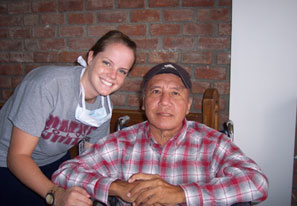
The Supreme Court will soon decide whether a state can force government employees to support a union. In January, the justices heard oral arguments in Harris v. Quinn, a case that could reverse a 37-year-old precedent that greatly empowered government-employee unions at the expense of citizens’ constitutional rights.
The Harris plaintiffs are not typical government employees. About 20,000 “personal assistants” in Illinois provide in-home care for disabled individuals eligible for benefits under a federally financed Medicaid program. Under the program, participants can get benefits while living at home instead of in an institution. Hired and fired not by the state but by the patients themselves—or “customers,” as the program describes them—the assistants are often family members. They get a check from the state-run Medicaid program but otherwise are “managed” by the customers for whom they care. This unique arrangement has spared them from having to join—and pay dues to—a government-employee union.
In one of his first acts after getting elected governor in 2002, union-backed Rod Blagojevich issued an executive order making Illinois home-care workers into state employees solely for collective bargaining purposes. Based on an informal—and unsupervised—“card-check” process, the home-care workers became represented by the Service Employees International Union (SEIU). The SEIU then “negotiated” a union contract with the state, under which the personal assistants had to support the SEIU through deductions from payments made to them by Medicaid on behalf of their customers. The union collects about $10 million a year in compelled dues and fees from Illinois home-care workers. Other unions are now aggressively pursuing home-care workers nationwide; to date, 14 states allow their unionization on similar terms.
Pam Harris, the case’s lead plaintiff, cares for her adult son. She and other home-care workers brought a class action against the state, disputing their status as Illinois state government employees and challenging the compelled union payments. They argued that, even if they were government workers, the rules in the public sector should be different from those in the private sector, where compulsory dues and fees have been allowed since the New Deal. Moreover, they claimed, since the SEIU in its bargaining role was influencing government action, the union is really a political organization engaged in lobbying. Compelling government workers to support such organizations violates their First Amendment rights, absent a “compelling state interest” in the outcome. The legal standard applied by the Supreme Court in private-sector cases—“labor peace”—is inapplicable when, as in Harris, the unionized employees don’t interact in a shared workplace.
The Harris plaintiffs lost in district court and in the Seventh Circuit, but the Supreme Court agreed to hear their appeal. Before the high court, the plaintiffs’ attorneys argued that the ruling in Abood v. Detroit Board of Education (1977)—in which private-sector labor law precedents were extended to the public sector for the first time—was wrongly decided and should be reversed. In Abood, a divided court ruled over the dissent of Justice Lewis Powell, who warned that compelled support of public-sector unions violated the constitutional rights of objecting employees.
In the 37 years since Abood was decided, government-employee unions have grown bigger and more influential, while union representation in the private sector has shrunk. Because of Abood, government unions have become one of the most powerful interest groups in American politics, financing their political campaigns with compulsory dues and fees. They dominate state and local elections and obtain for their members compensation and benefit packages that are driving many cities into bankruptcy.
Absent reform—whether at the judicial or legislative level—the power of government-employee unions to influence our politics will only grow. The SEIU and other unions will seek to enroll millions of government-funded service providers. These providers aren’t truly government employees but, like Illinois’s home health-care workers, could be coerced into subsidizing public-sector unions by executive fiat. The SEIU’s attempts to tie its efforts to private-sector collective bargaining are a smokescreen. When the government is the employer, decisions regarding the allocation of taxpayer funds are inherently political.
Judging by the oral arguments in January, the Supreme Court’s four liberal justices—Breyer, Ginsburg, Kagan, and Sotomayor—support Abood. The four conservatives—Alito, Kennedy, Roberts, and Thomas—appeared receptive to overturning Abood. But Antonin Scalia, ever the originalist, seemed skeptical, possibly viewing government-employee unions through the lens of patronage, which the Framers accepted and Scalia has defended elsewhere. One hopes that Justice Scalia reconsiders his position. The SEIU is practicing peonage, not patronage.




